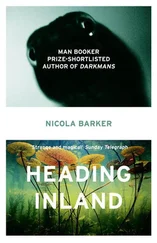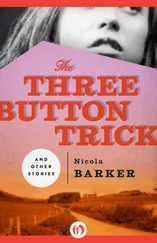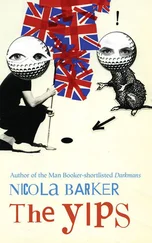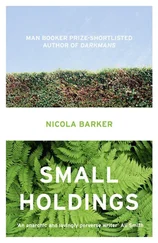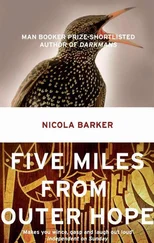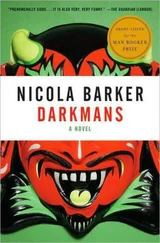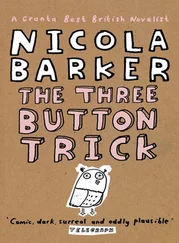I remember one occasion in which a group of we boys were playing together in the paddy fields. Uncle had walked a short way ahead of us, deep in thought, perhaps tiring of our childish noise and games. He was strolling along the sharp ridge of a green field, eating a handful of puffed rice from the knot in the corner of his wearing cloth, when he suddenly beheld the sky overtaken by a dark cloud. Uncle gazed up at this gray cloud with his habitual focus, and then a flock of white cranes flew in formation across the darkening heavens. It was a sight of such beauty that Uncle instantly lost all consciousness. And this is how we soon found him, utterly lifeless, his handful of rice scattered on the ground around him. I will never forget that terrible moment, that dreadful sight, so long as I shall live. I was only a child myself, younger than Uncle — perhaps six or eight years of age — but when I saw him thus my heart swelled in my chest and I felt such an intense love for Uncle. Uncle was so beautiful and so defenseless! I knew in that instant — even so young and so ignorant as I was — that my mission henceforth on this cruel earth was only to care for Uncle, to love Uncle, to guard him and to preserve him from all possible harm.
A passing observation …
Sri Ramakrishna had unusually long arms. His hands reached almost as far down as his knees.
Eight haiku
The boy looks skyward:
An infinite, gray vista—
A flapping of wings …
Newly formed black clouds—
Flock of white cranes in full flight—
The child gasps then swoons
Narcoleptic minds
Cannot distinguish between
Waking and dreaming
Sri Ramakrishna—
Who gave you this moniker?
What is your true name?
Stormy, dark heavens
Illumed by giant white wings:
God is everywhere!
Might there be some way
To engage with the Divine
Without mania?
God inflames his heart
Everything that happens
Reflects that strange glow
Joy will sometimes lead
Sensitive dispositions
To oblivion
Sri Ramakrishna, on the spiritual perils of domestic pet ownership
Truth Seeker ( somewhat disheartened ): “Master, how hard it is to raise the mind and spirit above worldly concerns!”
Sri Ramakrishna ( shrugging, resigned ): “Ah, yes. Even he who has no one to call his own will connive to raise a cat and thereby create attachment.”
An inquiry into the essential nature of farina pudding
The word “farina” means “meal” or “flour” in Latin. Farina pudding can sometimes also be called Cream of Wheat. It is generally served as a breakfast cereal in the West, and is composed from the germ or endosperm of the grain (which may be either wheat or, more often, semolina). It is carbohydrate-rich and is cooked by placing half a cup of the dry powder into a small saucepan, then adding a full cup of milk, or milk and water combined, and an optional pinch of saltand knob of ghee (or clarified butter). This mixture should be brought to a boil and then gently simmered for approximately ten minutes. It should be frequently stirred. It may be served with cold milk, brown sugar, honey, butter, or cinnamon. It is incredibly rich in natural iron and so is highly nutritious for vegetarians and invalids.
An additional haiku
He has such long arms!
Fingers almost to his knees—
Might this mean something?
1836
A few short weeks after her husband’s sudden death, and the Rani (who is not actually royalty) is being visited by Prince Dwarakanath Tagore (who is almost royalty). The Rani is too modest to speak with the Prince directly, so she is seated behind a curtain while her favorite son-in-law, Mathur Nath Biswas, acts as go-between. Mathur was married to the Rani’s third daughter, Karuna, who died in 1833, whereupon the Rani — who had always found Mathur to be an excellent and obliging aide both socially and in business — asked if he would consider marrying her fourth daughter, Jagadamba, so that he might continue to remain a member of their close-knit family. Mathur promptly and politely obliged her.
The Prince and Mathur are both magnificently mustachioed. The upper lip of Mathur — who has a heavy, square-set face and small, kind eyes but a generous nose and voluptuous mouth — is bedecked in a spectacular handlebar mustache. The Prince is lean faced and handsome. He has large, sharp, keen eyes and his mustache is in the chevron style — densely covering his lip and stretching down and out on both sides almost as far as the corners of his lean jawbone.
In a fight to the death between these two fine examples of facial furniture it is difficult to know who might be the victor. Perhaps Mathur’s waxed tips may give him the edge. But the Prince’s mustache is less frivolous, more workmanlike. The Prince’s mustache, and the Prince himself, mean business.
We find ourselves fairly well briefed on the physical and emotional location of the Rani at this present moment in history (behind a curtain, rich, vulnerable, newly widowed), but the Prince’s circumstances are harder to gauge. The Prince is in a temporary state of flux. He is a zamindar by trade (a kind of gentrified/landed tax collector), but this is only the tip of his entrepreneurial iceberg.
In the not-too-distant future Prince Dwarakanath Tagore will be widely celebrated — and with much justification — as one of the most talented, innovative, and industrious Indian entrepreneurs of all time. He will found banks (in fact, he’s already founded one); he will sell opium to China; he will purchase India’s first coal mine; he will be in on the ground floor at the establishment of Assam’s burgeoning tea trade; he will run tug services between Calcutta and the mouth of the Hooghly; he will build giant sugar, silk, and indigo factories. It should be noted that the Prince has a reputation for merciless efficiency. He is a ruthless business hawk who will happily grasp troublesome adversaries in his magnificent claws, contemplate them coolly, and then calmly tear their heads off. His is not a bad reputation, as such, but it’s certainly not a reputation to be trifled with.
Like the Rani, the Prince has succeeded in business through his pragmatic contacts with Britain, the British government, and the East India Company. Also like the Rani, he has, on occasion, been burned by these connections. In 1827, this burn was a saltburn — the Prince rootled out an invidious web of corruption in the SaltRevenue Department (where he was working, for a mere pittance, simply to forge business connections) and was spitefully countersued for his trouble.
How can we possibly hope to look deep into the heart of a man like Prince Dwarakanath Tagore — who lived and breathed and schemed (and made inconceivably huge amounts of money) almost 180 years ago? We can’t. It’s impossible. We can only make a series of vague assumptions and then cheerfully forge our equally fatuous, clumsy, and superficial deductions from them.
What we do know for certain is that the Prince’s unsatisfactory involvement in the SaltRevenue Department corruption farrago has left a bitter taste in his mouth ( sic ) and formed in him the powerful and completely logical urge to shake off ( sic ) his “official,” governmental connections and move forward in a more independent, free-ranging entrepreneurial capacity.
It can’t be an accident (can it?) that only a year after this decision (in 1828), the Prince and his great friend Ram Mohun Roy (who was definitely the spiritual and ideological brains of the outfit) helped to found what would eventually become (after a series of complex transfigurations) one of the most important social and religious Hindu/quasi-Protestant/monotheistic/Western-influenced/semi-egalitarian/pro-educational/anti-caste/anti-idol movements in India, the Brahmo Samaj (or Society of God). This embryonic movement — little more than a tiny, fluttering heart beat or pulse (think of it, if you like, as a kind of very early, cultural pacemaker) — will start what is generally known as the Bengali Renaissance, a neat porthole through which modern India herself may eventually be glimpsed.
Читать дальше

